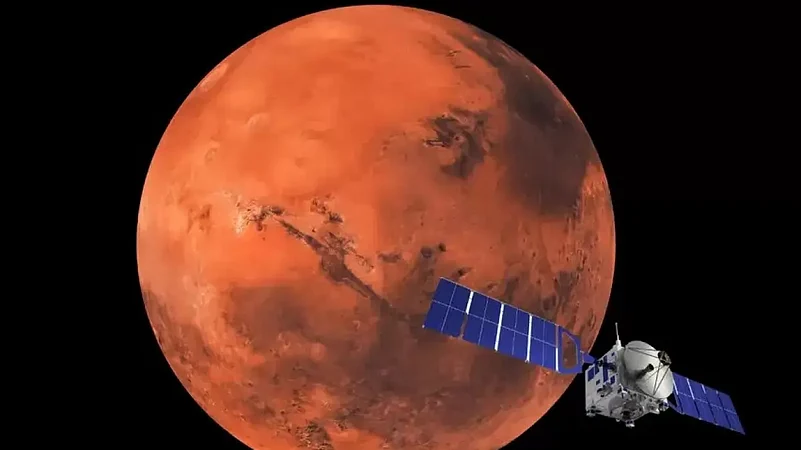The journey of Mangalayan, a space project that made India the first country in Asia to reach the orbit of the Mars is officially over. The Indian Space Research Organisation (ISRO) confirmed on Monday that the Mars Orbiter craft has lost communication with ground station, it's non-recoverable and the Mangalyaan mission has attained end-of-life.
Commemorating the eight years of Mangalayan project, also known as Mars Orbiter Mission (MOM) ISRO held a meeting on September 27. The meeting discussed that despite being designed for a life-span of six months as a technology demonstrator, the MOM has lived for about eight years in the Martian orbit with a gamut of significant scientific results on Mars as well as on the Solar corona, before losing communication with the ground station, as a result of a long eclipse in April 2022.
During the national meet, ISRO deliberated that the propellant must have been exhausted, and therefore, the "desired altitude pointing" could not be achieved for sustained power generation, ISRO said.
In an official statement ISRO said, "It was declared that the spacecraft is non-recoverable, and attained its end-of-life. The mission will be ever-regarded as a remarkable technological and scientific feat in the history of planetary exploration.”
"Equipped with five scientific payloads onboard, during these eight years, the mission has gifted significant scientific understanding on the Martian surface features, morphology, as well as the Martian atmosphere and exosphere," the statement added.
At this moment it is really helpful to look back how the project came into shape and what feathers it added to the space research of India.
How were the plans for Mangalayan Project made?
It was in 2008 that the plan of unmanned Mangalayan mission was first publicly recognised by the then chairman of ISRO G Madhavan Nair. After the successful launch of Chandrayaan-1, the project was taken over following the scrutiny of its feasibility.
The project was ultimately sanctioned officially by former Prime Minister Dr. Manmohan Singh on August 3, 2012.
How was it launched?
Firstly, the launch was planned on October 28, 2013. However, due to the bad weather it was postponed to November 5. 2013. On the said day ISRO’s PSLV C25 launched the Mars Orbiter Mission from Shriharikota, Andhra Pradesh.
From November 7-16, there were six Earth-bound manoeuvres performed and on December 1, it left the orbit of the Earth and the Trans-Mars injection was performed. On December 4, it left the Earth’s sphere of influence of 9.25 lakh km radius.
On September 22, 2014, Indian MOM entered Mars’ gravitational sphere of influence and within two days on September 24, it reached the intended orbit of Mars making India the first country in the world to successfully launch the Mission to the Mars in its first attempt.
The Recognitions and Achievements of the Mission
This Mission made India recognisable in the sphere of Space research across the globe. Being the first country in Asia to launch it and the first in the world to do it in first attempt, India flexed its impeccable capacity in the field.
Across the globe, it was lauded for being the cheapest mission of its kind. Bringing global recognition, the team behind the project received prestigious Space Pioneer Award from the US-based National Space Society.
One of the Chinese foreign Ministry functionaries also praised the Mission terming it ‘Pride of Asia’.
The Project also created its impact on the popular conscience as a few years ago Bollywood came up with a film namely Mission Mangal. This has been till the date one of the most celebrated projects by Indian Space Research Organisation.
(With Agency Inputs)
















